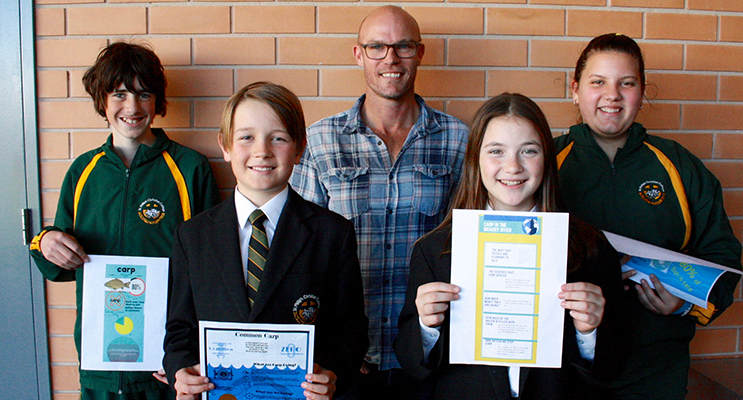
STUDENTS at St Philip’s Christian College studying science in Year 7 have been studying Carp in the Murray Darling Basin.

Matt Barwick, coordinator of the Commonwealth Government National Carp Control Plan (NCCP), came to speak with the students about his current work, and his hopes for increased carp control in Australia’s rivers.
Matt has been dubbed the Carpinator by Minister Barnaby Joyce.
The Australian Government is investing $15 million in ridding Australia’s waterways of carp.
Deputy Prime Minister and Minister for Agriculture and Water Resources, Barnaby Joyce said, “Carp can cause damage of up to $500 million per year by lowering water quality of domestic and irrigation water supplies, damaging wetlands, impacting upon agriculture, commercial and recreational fisheries, regional tourism industries, and harming native fish populations and river health.”
The students from St Philip’s Christian College have completed infographic posters, with the aim of highlighting the carp situation in the rivers of the Murray Darling Basin.
They discovered interesting facts like about the ecology of Australia’s rivers with 80 percent of the fish in our rivers being carp, and that this noxious pest can lay up to 1.5 million eggs each year.
Mandy Eggins of St Philip’s Christian College told News Of The Area, “Students were interested and concerned to hear Mr Barwick talk about the problems that the huge carp numbers are having on river water quality and native fish numbers.”
“The positive message that Mr Barwick shared was that there is hope for a new control method that could reduce the carp numbers by 90 to 100 percent.”
“Students were excited to hear that some of their work may be soon displayed on the (NCCP) website,” she said.
By Marian SAMPSON
